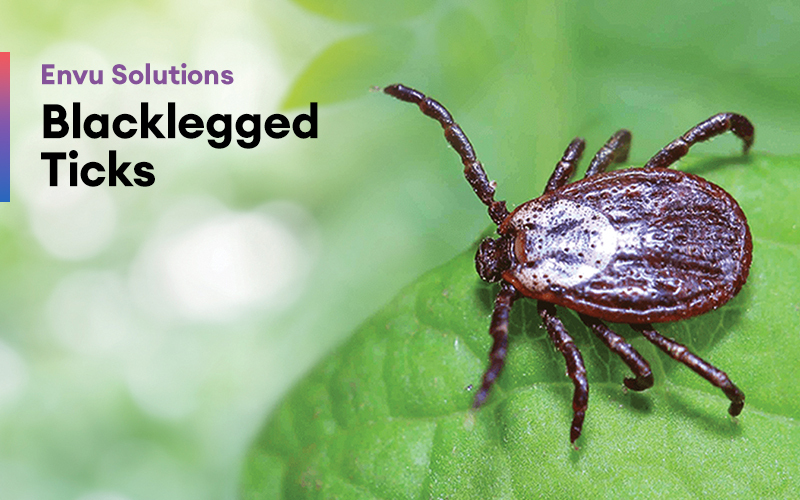Envu Solutions - Blacklegged Ticks
Blacklegged ticks (BLT) are a major public health concern as they can carry the bacteria that causes Lyme disease. Lyme disease is on the rise in Canada, as these ticks continue to spread into new areas. But with Envu solutions in conjunction with a comprehensive management program, you can help minimize the risks.
Many tick species, in particular the blacklegged tick, have become increasingly abundant in many regions of Canada. These arthropods are considered to be a major public health threat due to their ability to transmit a wide range of human illnesses, including Lyme disease and anaplasmosis.
Life cycle and behavior
Blacklegged ticks have a two-year life cycle. Females can lay up to 18,000 eggs each spring. In summer, the eggs hatch into six-legged larva that feed on blood from small animals such as birds and mice. As the ticks develop, they can begin to attach to larger animals such as pets, deer and humans. By the following spring, the larvae will become eight-legged nymphs that continue to feed on larger animals. In the fall, the nymphs will reach maturity, reproduce and lay eggs and complete the life cycle.
Because blacklegged ticks cannot fly or jump, they have to crawl up vegetation or onto structures in order to cling to a passing host. Once attached, the ticks will remain with the host and feed for several days. Current data suggests the greatest chance of human infection occurs from late spring through summer. Regional territory and local habitats
Geographically, tick populations are expanding north at an estimated rate of 45 km per year, which is likely due to increasing warmth in recent decades and changes in animal migration patterns. One example of this expansion is the lone star tick, which is native to the southern United States but can now be found in southern Ontario.
Blacklegged tick populations increase rapidly each spring and reach peak numbers by early to midsummer. Common habitats of ticks on golf courses include:*
- Long grass areas, such as native areas in roughs and along select bunker faces
- Areas in or near tree-lined perimeters
- On ornamental plantings or dense shrubbery, especially those grown in shade
Envu control solutions
Suspend PolyZone®, containing the active ingredient deltamethrin, is now labelled for control of blacklegged ticks. It is a fast-acting, broad-spectrum pyrethroid insecticide registered for control of ticks, ants, chinch bugs, cutworm and sod webworm on turfgrass.
For blacklegged tick control, treat with Suspend PolyZone at a rate of 12 mL per 100 m2 in a carrier volume of 8 L per 100 m2. Apply to the parts of the course that are most susceptible to tick populations, such as long grass (native roughs and bunker faces), tree-lined perimeters, dense shrubbery and shady areas.
For more information about blacklegged ticks, download the solution sheet or contact your local Territory Sales Manager for tick control strategies specific to your needs.
ALWAYS READ AND FOLLOW PESTICIDE LABEL DIRECTIONS. Envu and the Envu logo, are trademarks owned by Environmental Science U.S. LLC. or one of its affiliates. ©2023 Environmental Science U.S. LLC. All rights reserved.
*Public Health Ontario has stated that blacklegged ticks can be transported by migratory birds and small mammals, which makes it possible to encounter an infected blacklegged tick almost anywhere.

